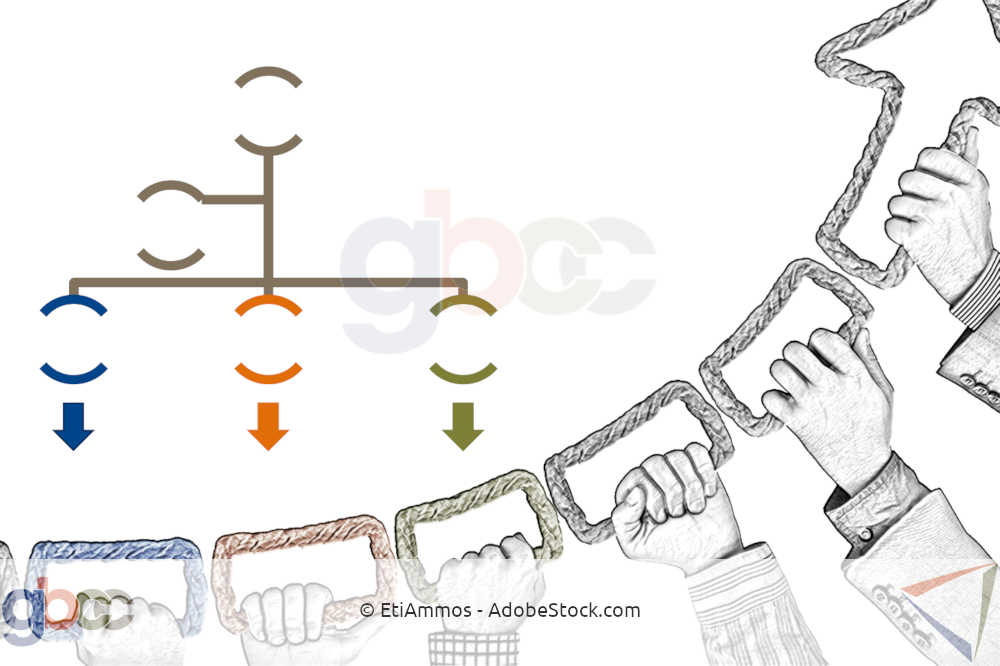If you are concerned with the effectiveness of your business’s activities, you have the right mindset to get to your defined goal. This is good! Your organisational structure, on the other hand, can make your life unnecessarily difficult. Then it becomes chaotic, and the overall result is poor!
- Part 1: Effectiveness vs. organisational structure
- Part 2: Efficiency vs. agility
- Part 3: Productivity/economic profitability vs. period thinking
- Part 4: Strategic uncertainty vs. economic profitability
Crystal clear communication and the right way to deal with complexity
Assuming that a company is not successful, even if the respective responsible managers can show good progress in optimising the productivity and profitability of their units, then quite obviously important components have been overlooked or at least underestimated.
Firstly, it should be noted that terms such as “effectiveness”, “efficiency”, and “productivity” should not be used unreflectively as synonyms. In many expert contributions, including this one, one therefore obtains conceptual delimitations to establish a common language.
However, I would like to go one decisive step further because, in my opinion, the discussions on this matter miss the point. What really counts is crystal-clear communication that takes all levels into account and includes the appropriate way of dealing with complexity.
Complexity is different from complicatedness
Complexity is not the same as complicatedness. In a complicated system, by way of simplification, you can take two components out of a clock system for example, optimise their interaction and then put them back into the system.
Complex systems like a company, on the other hand, has a “living life of their own” that is not so easy to explain and control. If we pick out two components and treat them separately from the rest, we tend to create chaos in the system.
A complex system can only be developed as a whole towards the desired direction. The long-distance effects and interactions of all measures must be kept in sight.
In this series of articles, I would like to make the complex connections within a company more accessible. The first part is about effectiveness, and the sometimes deceptive feeling of doing “the right things”.
Effectiveness (doing the right things)
To what extent is what your employees do really suitable for achieving your company’s goals? If you look at the effectiveness of the company’s activities to answer this question, you are obviously doing the right thing to get to the defined goal – or are you?
After all, the intention of achieving a goal is to lead to a specific result or effect, right? A note of caution: this is easier said than done because we encounter many imponderables in the implementation process:
1. The company pursues several (competing) goals at the same time.
- The sales manager has set the goal of increasing sales. The internal committees have set a goal to reduce costs. Sales then complains that they cannot do “the right thing” to achieve a sales increase because the resources are not approved.

2. The common goal is not clearly formulated, and the consequences are not well thought out.
- If the sales force is explicitly evaluated based on increasing sales, then they will offer additional services free of charge, if necessary, to persuade the potential customer to make a purchase.
- If target achievement is linked to the increase in gross profit, then managers will be firmer in price negotiations with customers.
- If target achievement is linked to cross-selling and upselling measures, then sales will put more focus on customer care and expectation management.
3. Effectiveness is sought through a “rail shot” and/or is not easily measurable.
- Do investments in “Research & Development” ensure the long-term competitiveness of the company?
- Does the marketing goal of “increasing awareness” lead to more revenue sooner or later?
4. Ineffective and effective activities are difficult to separate.
- With a lot of effort, an AI module is built into a software product, and in addition, 24/7 call-centre availability is introduced to positively enhance the customer experience. Could the additional effort be adequately and successfully included in the price?
5. There are several conceivable paths to the goal, which may not be easily comparable.
- A company uses a call centre quite effectively in their sales process. However, the marketing consultant posits: “Incorporating a newsletter mailing into a digital sales funnel would be even more effective.”
It becomes clear: effectiveness in its entirety requires the consideration of several levels. If this is not done, it becomes (unnecessarily) difficult. And this brings us to the inglorious role of the organisational structure.
Your organisational structure torpedoes your effectiveness
The realities of any company take place during its processes. What one skilled employee produces as an output is needed elsewhere as an input by another skilled employee to continue the project. “Internal service providers/suppliers” encounter their “internal customers”.
How useful is the colleague’s output for my own work? How long do I have to wait for their output? These are examples of questions that are truly relevant.
Silo thinking and departmental egoisms must be overcome
With at least 20 to 30 employees, companies start to systematically introduce an organisational structure with departments and hierarchies.
This organisational structure, which is considered to be the only option, also harbours problems that the company must keep in mind and solve: silo thinking and the associated need to overcome departmental egoisms.

Why do these problems exist? The organisational structure of a company draws the attention of employees away from the processes involved. Instead of thinking about what their internal customers need from them, employees tend to think about what their superiors think and expect from them, and that is each individual department for itself. The overall goal is no longer seen.
This overarching view – a bridge function across departmental boundaries – belongs to a person in a managerial position, which is, however, often alarmingly vacant. This person ensures that departmental egoisms can be overcome, that employees’ activities interlink logically and create meaning and value at the end of the chain – from the customer’s point of view, mind you!
How effective are common practices in contract negotiations?
As if this did not complicate life enough, companies add to it by extending the lack of internal effectiveness to their external business partners. The centralised purchasing of large companies is, unfortunately, a major contributor to this.
Sadly, this phenomenon is more common in the construction and IT sectors than elsewhere. The reality in many cases is as follows:
During contract negotiations, service provider/supplier A will inflate their offer to have negotiating reserves. Customer B will always renegotiate A’s offer and squeeze the price, no matter how fairly the offer was calculated.
Change-order management is fundamentally ineffective for all parties involved
At the time of signing the contract, both parties know that they will not adhere to the mutually agreed contractual modalities:
Service provider/supplier A will most likely not meet the contractually guaranteed deadline. In order to ultimately achieve an adequate profit margin, they will have to creatively look for new sources of income. In the construction industry, this process is affectionately referred to as “change-order management”.
And for customer B, it is already clear at the time of signing the contract that they will insist on goodwill services and expect service provider/supplier A to deliver/perform more than contractually agreed upon. In addition, they will leave service provider/supplier A’s invoices unpaid and grant themselves a trade credit.

Does service provider/supplier A’s behaviour trigger customer B’s behaviour? Is it the other way around, or are they mutually dependent? The question of who is to blame here is irrelevant though. The result is both parties to the contract are waiting for a breach of contract. And it is precisely this behaviour that triggers a cascade of ineffective activities in both companies. In the next article we will deal with the problem of “efficiency”.
- Part 1: Effectiveness vs. organisational structure
- ➟ Part 2: Efficiency vs. agility
- Part 3: Productivity/economic profitability vs. period thinking
- Part 4: Strategic uncertainty vs. economic profitability

